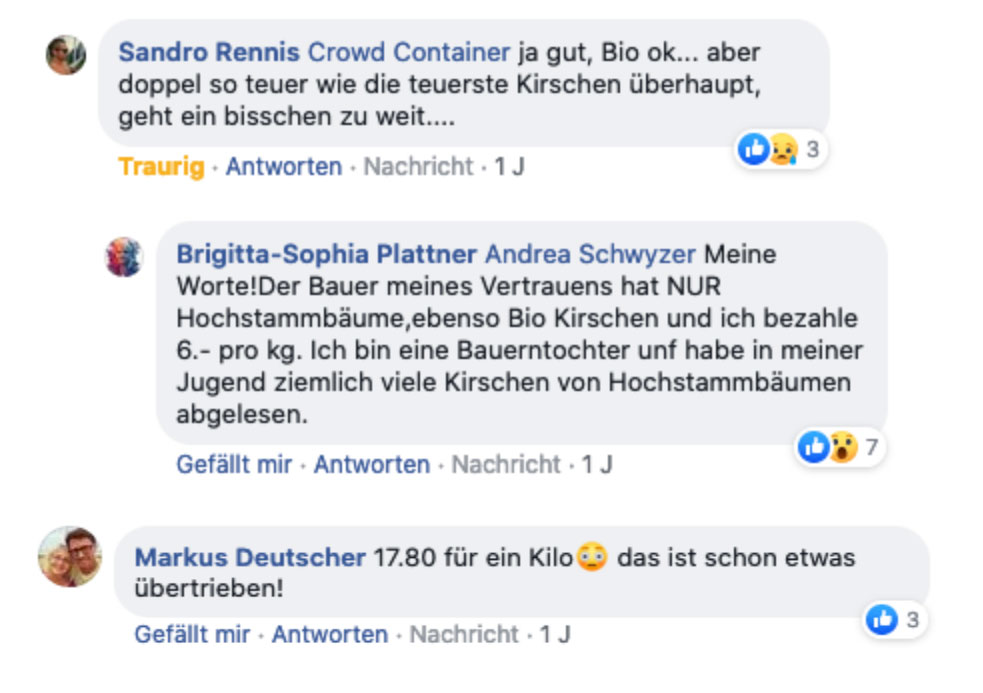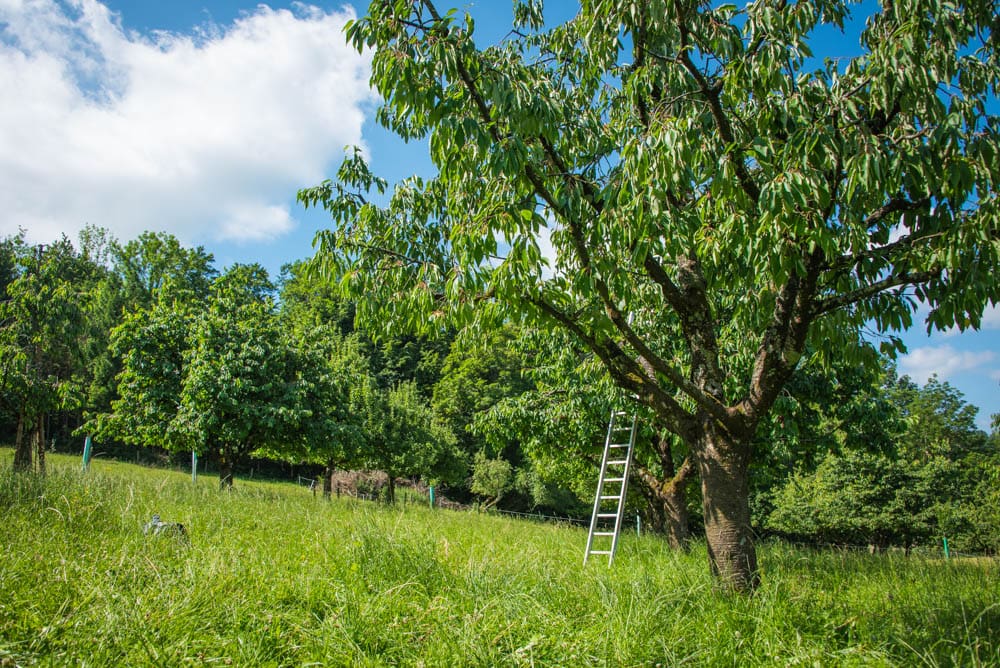Valuable high-stem cherries

When we sold Christoph Rickenbach's high-stem cherries via our online market last year, we received quite a few comments such as:

That's why we made a short film during this year's harvest to show how the cherries are grown and why they cost us around 18 francs per kilogram.
High-stem cherries: ecologically valuable ...
Cherries can be grown in two ways: in high-stem or low-trunk orchards. High-stem trees are trees as we imagine them: around ten meters high, thick trunks and a lush crown with lots of greenery. They stand majestically in green meadows, live for up to 100 years and characterize the landscape or even entire regions, such as the Fricktal.

Low-stem trees, on the other hand, are found in small-scale, covered plantations. They are only four meters high and are felled again after around 12 years. Sometimes you can't even see the leaves because of all the cherries.

High-stem trees have an ecological advantage over low-trunk systems due to these conditions. They provide valuable habitats for birds such as the blue tit or the dormouse and other small mammals. Low-trunk cherries grow in closed, supervised plantations and are therefore home to very few (small) animals. Those who cultivate high-stem trees and buy high-stem cherries therefore contribute to more biodiversity in agriculture.
... and even cheaper!
So much for now: We were able to refute the introductory quote quite easily - 500 grams of organic low-stem cherries in the Coop cost 9.95 francs this year (i.e. 19.90/kg). Christoph's organic high-stem cherries are CHF 1.60 per kilogram cheaper via Crowd Container. In addition, Christoph receives around two francs more for his cherries than the recommended producer price for organic low-stem cherries. The fact that around 4-5 times as many cherries can be harvested per hour in a low-stem system (see film) makes the low-stem system appear more economical at first glance. However, the investment and the entrepreneurial risk of such a low-stem system should not be underestimated.
We are convinced that producers like Christoph from all over the world should receive a fair price for their food and our full appreciation - that's what we at Crowd Container are committed to.
Thank you very much for this great and important contribution! You have shown very impressively where the advantages and disadvantages of each form of production lie. About the prices: Sometimes it seems to me that products are simply put in the trolley at the supermarket without giving much thought to the prices. The bulk purchase then costs what it costs. Why are consumers more sensitive in farm stores?
Hello Cornelia, we are pleased that you appreciate our contribution! Thank you for your question, which I have already asked myself. Perhaps some people shop in farm stores, in smaller (organic) stores or with us (unconsciously) with the attitude that the products are more expensive anyway and therefore pay more attention to the price? In any case, we have found that great openness and transparency are particularly important when it comes to prices, so that people understand why a product costs how much. That's why we show how the price is made up for each of our products and who in the entire supply chain receives how much. Kind regards, Beni